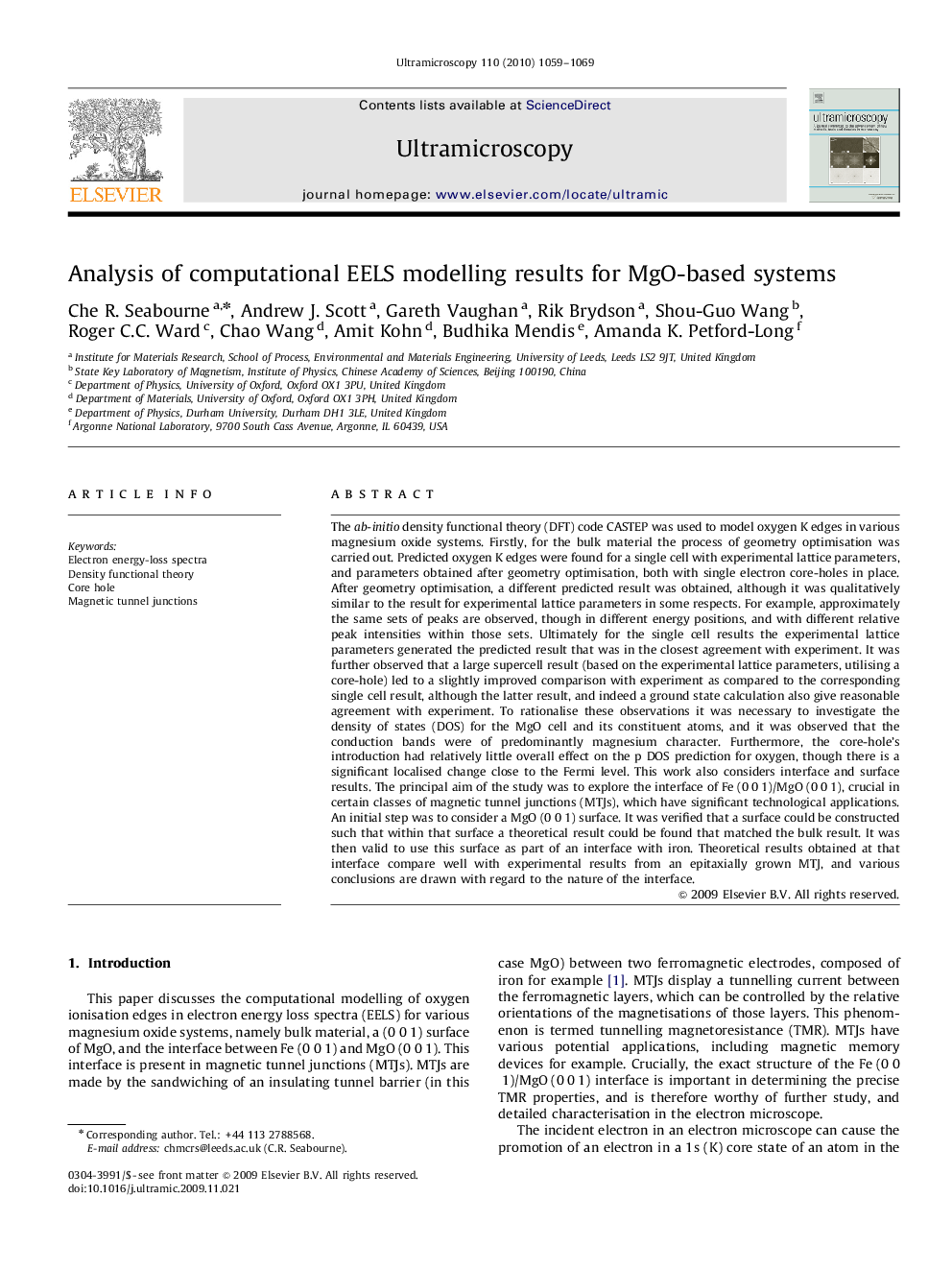| کد مقاله | کد نشریه | سال انتشار | مقاله انگلیسی | نسخه تمام متن |
|---|---|---|---|---|
| 1678063 | 1009926 | 2010 | 11 صفحه PDF | دانلود رایگان |

The ab-initio density functional theory (DFT) code CASTEP was used to model oxygen K edges in various magnesium oxide systems. Firstly, for the bulk material the process of geometry optimisation was carried out. Predicted oxygen K edges were found for a single cell with experimental lattice parameters, and parameters obtained after geometry optimisation, both with single electron core-holes in place. After geometry optimisation, a different predicted result was obtained, although it was qualitatively similar to the result for experimental lattice parameters in some respects. For example, approximately the same sets of peaks are observed, though in different energy positions, and with different relative peak intensities within those sets. Ultimately for the single cell results the experimental lattice parameters generated the predicted result that was in the closest agreement with experiment. It was further observed that a large supercell result (based on the experimental lattice parameters, utilising a core-hole) led to a slightly improved comparison with experiment as compared to the corresponding single cell result, although the latter result, and indeed a ground state calculation also give reasonable agreement with experiment. To rationalise these observations it was necessary to investigate the density of states (DOS) for the MgO cell and its constituent atoms, and it was observed that the conduction bands were of predominantly magnesium character. Furthermore, the core-hole’s introduction had relatively little overall effect on the p DOS prediction for oxygen, though there is a significant localised change close to the Fermi level. This work also considers interface and surface results. The principal aim of the study was to explore the interface of Fe (0 0 1)/MgO (0 0 1), crucial in certain classes of magnetic tunnel junctions (MTJs), which have significant technological applications. An initial step was to consider a MgO (0 0 1) surface. It was verified that a surface could be constructed such that within that surface a theoretical result could be found that matched the bulk result. It was then valid to use this surface as part of an interface with iron. Theoretical results obtained at that interface compare well with experimental results from an epitaxially grown MTJ, and various conclusions are drawn with regard to the nature of the interface.
Journal: Ultramicroscopy - Volume 110, Issue 8, July 2010, Pages 1059–1069